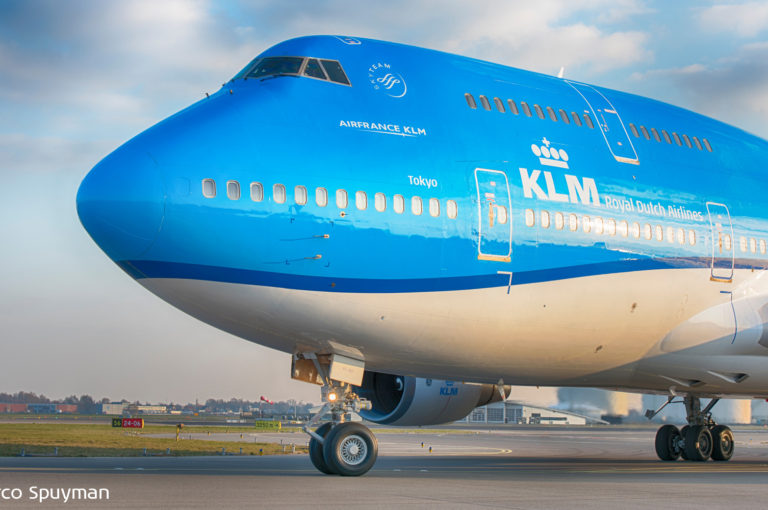What is hidden in the nose of an aircraft?
When KLM operated its first flight in 1920, it used a De Havilland DH.16. The aeroplane had a large propeller just in front of the engine mounted on the nose. These days, aircraft get their thrust from jet engines under the wings. So, does that mean the aircraft nose has been demoted to a superfluous, hollow space..? Nope, far from! I decided to stick my nose into KLM Engineering and Maintenance’s business to find the answer to the question that has been occupying me for ages: What exactly is hidden in the nose of an aircraft?
I went to speak with KLM ground engineer Martijn Smorenburg. First, he informed me of the aircraft nose’s official name – the radome (radar + dome = radome). The radome is a spherical plastic cap that opens up and serves as the weatherproof housing for some important equipment – the radar antenna, sometimes called the dish antenna – a sensitive plate that transmits and receives radio waves. The nose is made of smart material that blocks external weather influences but allows electromagnetic radiation to pass through.
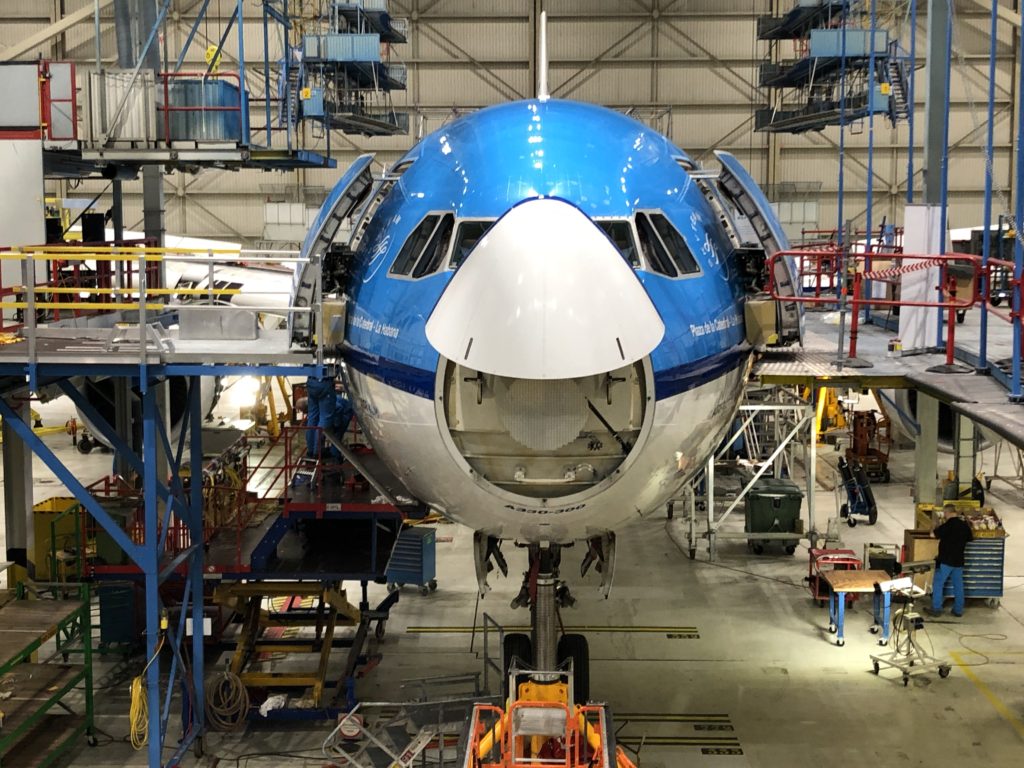
The opened radome of an Airbus A330.
The radar antenna’s most important functions are:
- The Weather Radar, which measures the size of water droplets in the air allowing the aircraft to detect unpleasant weather conditions ahead. Pilots want their flights to be as comfortable as possible for their passengers and crew, and use the information to avoid precipitation and turbulence. That’s particularly nice if you’ve just started on your chicken or beef🍲.
- The Ground Proximity Warning System (GPWS) warns pilots if the aircraft is flying too close to the ground or if there is an object in the vicinity🛬. It scans the terrain below the aircraft so that pilots always know their altitude. For example, if the aircraft is descending too fast, they will hear the command PULL UP and the pilot has to raise the aircraft nose as quickly as possible.
Then there is another antenna, called the localiser. It works in combination with the glide slope antenna (located under the A330 cockpit or near the B777 nose wheel) and the flight director signal, a kind of Satnav for pilots that indicates the flight plan. The localiser plots the ideal descent path for the aircraft. The onboard antennas make contact with antennas along the runway to determine the best possible landing position. The glide slope antenna looks at the aircraft altitude to prevent it from starting its descent too early or too late. The localiser looks at whether the aircraft is drifting sideways too much. Pretty useful!
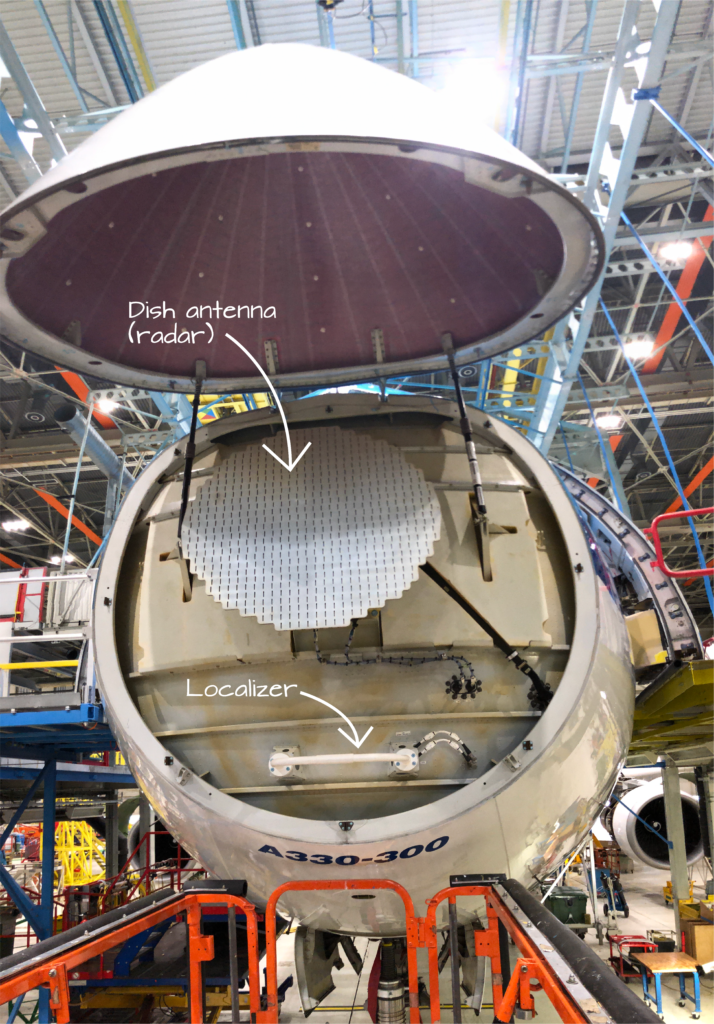
The opened radome of an Airbus A330-300.
A few more facts about the nose of an aircraft:
- Extreme weather conditions can be bad for the nose. For example, the radome can sustain damaged from hail storms. So, it’s important that the aircraft nose gets checked carefully, and that happens regularly in the hangar. Still, a damaged nose is not a flight hazard. In that case, pilots are trained to land their aircraft in every situation.
- Radar testing may never take place in the hangar. Radar can emit considerable radiation and can only be tested at designated test locations outside the hangar.
- Have you ever noticed the lines on the nose? They’re important. If lightning should strike the aircraft nose – which does happen – the wires on the nose divert the electrical charge safely along the fuselage to the tail, where it leaves the plane again.
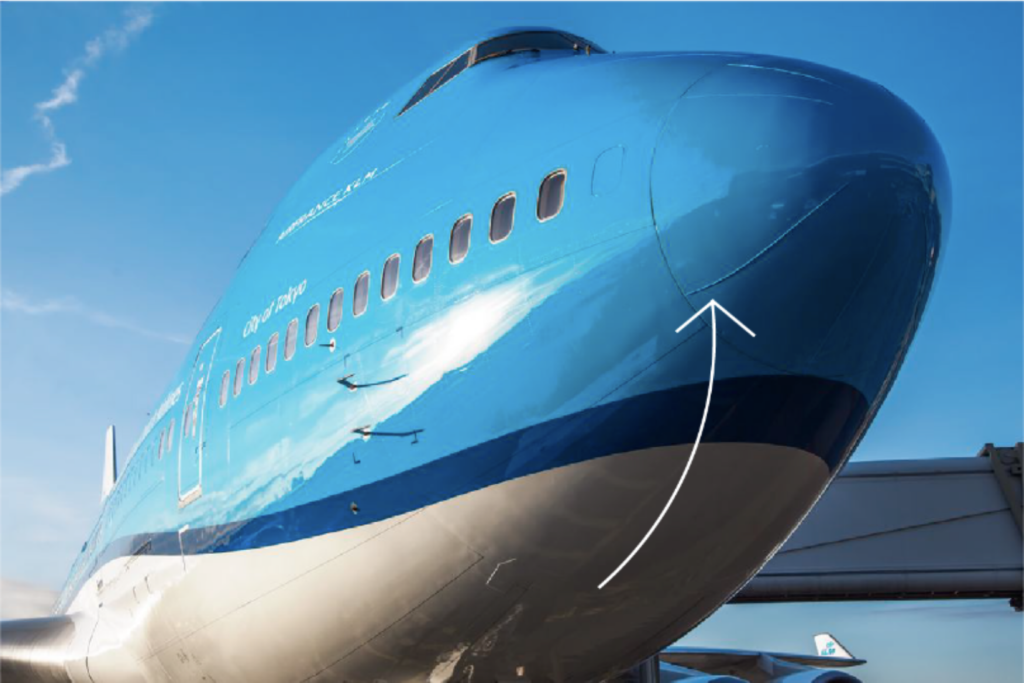
- Flightradar24 does not track aircraft through the aircraft dish antenna, but via antennas on the aircraft belly. These are small, yellow fins that transmit the aircraft position.
- The nose of an A330 opens upwards while that of a B777 opens sideways.
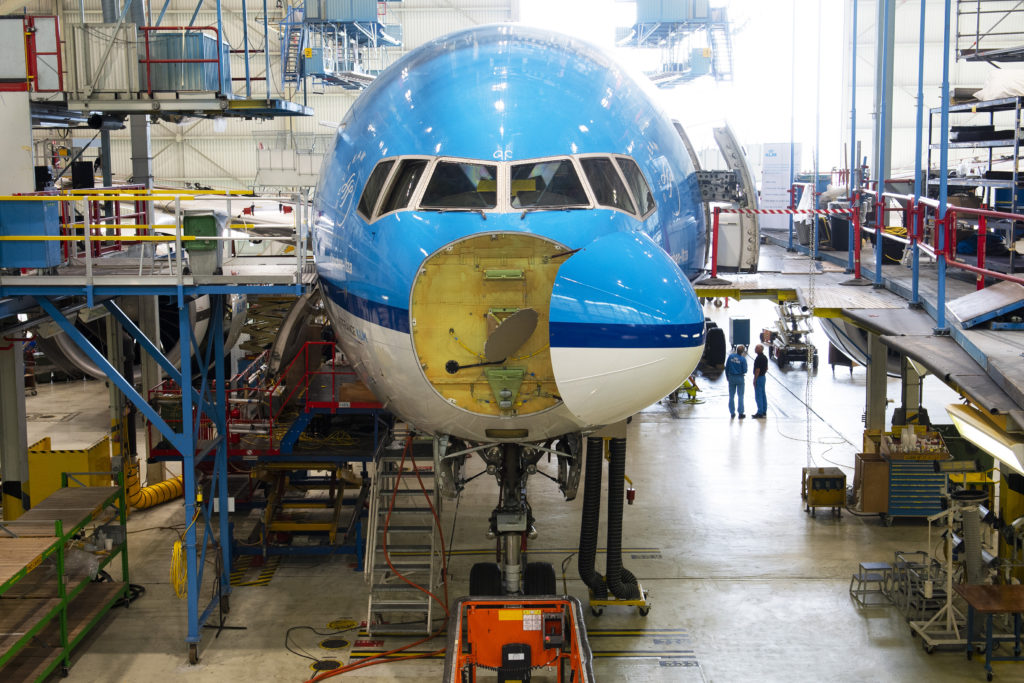
Boeing 777 with opened radome.
So next time you find yourself at the boarding gate and you see one of our big blue birds readying for departure, take a good look at that bright blue nose. There’s more to, or in it, it than you think!
Many thanks to KLM ground engineer Martijn Smorenburg.
